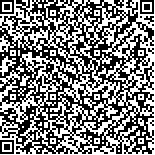吴少璞,李学,祁亚伟,等.重复经颅磁刺激联合康复训练改善帕金森病运动及非运动症状的疗效观察[J].中华物理医学与康复杂志,2019,41(5):338-343
扫码阅读全文

|
| 重复经颅磁刺激联合康复训练改善帕金森病运动及非运动症状的疗效观察 |
|
| |
| DOI:DOI:10.3760/cma.j.issn.0254-1424.2019.05.006 |
| 中文关键词: 帕金森病 重复经颅磁刺激 康复训练 运动症状 非运动症状 |
| 英文关键词: Parkinson′s disease Transcranial magnetic stimulation Rehabilitation training |
| 基金项目:河南省科技厅科技攻关项目(162102310283) |
|
| 摘要点击次数: 6227 |
| 全文下载次数: 7376 |
| 中文摘要: |
| 目的 观察重复经颅磁刺激(rTMS)联合康复训练对帕金森病(PD)患者运动及非运动症状的改善作用。 方法 采用随机数字表法将150例PD患者分为磁刺激组、康复训练组及观察组。3组患者均给予常规药物治疗,磁刺激组同时辅以rTMS治疗,康复训练组辅以康复训练,观察组则辅以rTMS及康复训练联合治疗。于治疗前、治疗4周后采用统一帕金森病综合评定量表(UPDRS)评估各组患者总体疗效;采用10 m折返运动试验、上肢技能简易测试(STEF)和Berg平衡量表评定各组患者运动症状改善情况;采用非运动症状筛查问卷(NMSQ)、简易精神状态量表(MMSE)、汉密尔顿抑郁量表(HAMD)和焦虑量表(HAMA)、帕金森病睡眠量表(PDSS)评估各组患者非运动症状改善情况;采用生活质量综合评定问卷(SF-36)评价各组患者生活质量情况。 结果 治疗后3组患者UPDRS各项评分均低于治疗前水平(P<0.05),且观察组UPDRS行为和情绪评分[(5.1±2.0)分]明显低于康复训练组,运动能力评分[(30.0±4.0)分]明显低于磁刺激组,日常生活活动评分[(21.5±3.2)分]均明显低于磁刺激组及康复训练组(P<0.05);治疗后磁刺激组患者10 m折返时间、STEF及Berg评分均较治疗前无明显改善(P>0.05),康复训练组及观察组10 m折返时间均较治疗前明显缩短,STEF及Berg评分均较治疗前明显增高(P<0.05);治疗后磁刺激组及观察组NMS、MMSE、HAMD、HAMA及PDSS睡眠质量评分均显著优于治疗前水平(P<0.05),且观察组NMS、MMSE、HAMD及HAMA评分[分别为(16.2±5.1)分、(20.3±3.3)分、(8.2±3.5)分及(9.9±3.4)分]均优于康复训练组(P<0.05),PDSS睡眠质量评分[(107.3±13.0)分]均优于磁刺激组及康复训练组(P<0.05);治疗后观察组生活质量SF-36评分[(98.5±21.8)分]显著优于磁刺激组及康复训练组(P<0.05)。 结论 rTMS联合康复训练能显著改善PD患者运动及非运动症状,其疗效优于单一rTMS治疗或康复训练干预,该联合疗法值得临床推广、应用。 |
| 英文摘要: |
| Objective To explore the effect of repeated transcranial magnetic stimulation (rTMS) combined with rehabilitation training on the motor and non-motor symptoms of Parkinson′s disease. Methods A total of 150 persons with Parkinson′s disease were randomly divided into an rTMS group, a rehabilitation training group and an observation group, each of 50. The rTMS group received only repeated magnetic stimulation. The rehabilitation training group received only standard rehabilitation training. The observation group was given both for 4 weeks. The overall efficacy of each treatment was evaluated using the unified Parkinson′s disease rating scale (UPDRS), while the motor symptoms were assessed using the 10 m back-and-forth run test, a simple test for evaluating hand function (STEF) and Berg′s balance scale. Non-motor symptoms were evaluated using a questionnaire (NMSQ), the mini-mental state examination (MMSE), the Hamilton depression scale (HAMD), the Hamilton anxiety scale (HAMA) and the Parkinson′s disease sleep scale (PDSS). Moreover, a comprehensive quality of life assessment questionnaire (SF-36) was used to evaluate the life quality of patients before and after the treatment. Results Compared with before the treatment, the average UPDRS scores of all three groups were lower after the treatment. Moreover, the average UPDRS score of the observation group was significantly lower than those of the other two groups. Significant improvement was observed in the mean 10 m run time and in the average STEF and Berg scores of the rehabilitation training and observation groups, but not in the rTMS group′s averages. After the treatment, the mean NMSQ, MMSE, HAMD, HAMA and PDSS results of the rTMS and observation groups were significantly better than those before treatment, with the observation group′s averages significantly better than those of the rehabilitation training group. The average PDSS and SF-36 scores of the observation group were also significantly better than those of the other groups. Conclusion rTMS combined with rehabilitation training can significantly improve the motor and non-motor symptoms of Parkinson′s disease patients, and its efficacy is superior to that of rTMS or rehabilitation training alone. |
|
查看全文
查看/发表评论 下载PDF阅读器 |
| 关闭 |
|
|
|